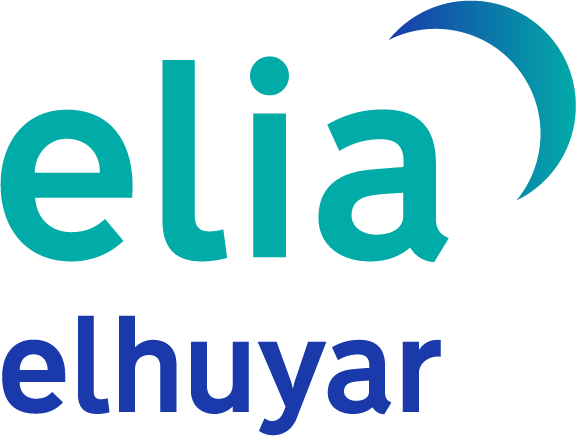Although collaboration between various media outlets has been going on for a long time, as changes are bigger and faster, relations in this media ecosystem show a growing need for collaboration. It is clear that we must influence the use in our favour of digitisation and artificial intelligence, which are the most obvious consequences of the development of technology, since mere non-influence will produce in itself an opposite effect as a non-hegemonic language and culture. In the same sense, in the face of the increasing expansion of the hegemonic space, it is essential to continue and consolidate the climate of collaboration of all of us who are part of the ecosystem of the Basque media, creating new projects based on new alliances.
In this post that you have at hand or in front of the screen we have sought to collect experiences, reflections and studies that go in this direction, along with other contributions and enriching research.
In total, fourteen articles and three supplementary annexes have been collected in this 2022-2023, Basque Media Yearbook. Obviously, we have made a small change in the name, incorporating last year also that of this year. And it is that the vocation of this publication, in addition to gathering those that have been given in previous years, is to raise a number of issues that will be addressed throughout this year.
To start exploring what you will find inside, Libe Mimenza Castillo, coordinator of the Basque Media Observatory and member of the NOR Research Group of the UPV/EHU, offers us a chronicle full of details about how the ears are directed to other countries and how they are called “international communication trends for change”. As the title itself says, there are changes, and in those cases, knowing the activity of others helps to solve their own doubts or inspire.
In this sense, the second chronicle, entitled “Traba traba traba traba traba los medios de comunicación en Euskera”, was signed by Igor Astibia, director of the Association of Basque Media (HEKIMEN), who, in addition to summarizing what he has given last year in the Basque media sector, has collected a sample of the new products that have been created.
In the section on signatures that premiered last year, the Professor of Linguistics of the University of the Basque Country, Itziar Laka Mugarza, informs the reader of the present day of a period that seemed to be of science fiction in his reflection “The Basque in the Sea of Electric Fish”. In it, he claims the strategic knowledge of bilingualism and praises a elaboration that allows to draw the attention of all the agents involved in its development and deepening. Perhaps less directly, but here too there is a call for collaboration.
Five copies have been added to the series of key articles to deepen the internal knowledge of the sector. The experience of collaboration between Goiena, Tokikom and EITB is told by the protagonists in the article ‘From action to agreement; with agreement, to the development of cooperation’. The text, signed by the director of Goiena Telebista, Oihane Agirre, and the director of ETB, Unai Iparragirre, explains the Saretek Convention and its collaboration in the live TV show on the eve of San Juan. Complementarily, and adding to the previous article a significant collaboration of 2022, Iban Iñaki Lantxo and Helios Del Santo, of the Korrika Communication Group, offer lines to the collaboration between the media of the past massive exercise, in the brief annex “Euskara, Korrika, at four winds!”.
The new spaces are also opened up in our environment and what we receive from them is a proposal for direct collaboration, so we want to follow very carefully the newborn road of Badalabe. Firstly, we have a magnificent presentation card, the article ‘Badalab: a place where language and innovation are crossed’, signed by Mikel Irizar Intxausti, Goiatz Oiartzabal Lakarra and Leire Palacios Egiguren, President, director and promoter of innovation, respectively, of Badalabe.
One of the risks of the sector is cyber-attacks. The article “Cyberattacks, a risk and a common problem” lists the attacks that have taken place and advice to avoid them, an activity that demonstrates the need and attitude of mutual help, by Izar Mendiguren Cosgaya, Asier Iturralde Sarasola, Alex Aginagalde and Urtzi Driodroalda, respectively.
Another article that highlights cooperation is entitled “Del Bertsolari Txapelketa Nagusia al Nord Stream: the importance of free content in a non-hegemonic language”, presented to us by Wikilari and publisher Galder Gonzalez, and which talks about the importance of sharing content in a community like ours.
Finally, and to end the articles we have received directly from the mouth of the sector, a newborn media has made us part of their strong intentions in an entirely rounded story by the whole team of “The Company, domesticating the economy”. The authors are Pilar Galtzada Gonzalez, Niko Cuenca Beristain, Maite Reizabal Arrangi, Karolina Sainz de Bikuña Irigoien, Iraia Oteiza Jauregi and Borja Lopez Cárdenas.
In the more extensive studies and research section, this year we have six articles and two annexes. To open the department, «Current audiovisual production in Basque. Analysis of production, consumption and dissemination, with a qualitative view as axis", by Eneko Iriondo Azpiri, Master in Multimedia Communication (UPV-EHU). Comprehensive analysis reveals the need for urgent cooperation between the various players in the audiovisual field, feeding the list of challenges.
Below is a comparative study of online journalism, produced in nine minority languages of Europe, which investigates the agenda and the protagonists of online news, which are being imposed against traditional production and consumption. In this map we are interested, among other things, in the situation of our language. The authors have been called “News from the small Europe network: a balanced online agenda of minority languages, a limited world”; Iñaki Zabaleta, from the UPV/EHU HEKA Research Group, Orreaga Zabaleta Ikatzeta, Tania Arriaga and María Gorosarri.
The next research work has analyzed Twitter accounts and their communities of seven media. They have differentiated eight types of communities and determined some characteristics of each. The study"s degree of cohesion and other concepts have been studied, suggesting the great interest in the continued realization of this observation. ‘Analysis of Basque media audience networks. Analysis of the communities of the 7 media linked to the Observatory that most Twitter followers have» is the work done by analysts of Jordi Morales i Gras and Amaia Perez de Arriluzea Madariaga Eduring the course. The following questions have been noted in alphabetical order: @argia, @berria, @fm 983radio, @Gaztezulo, @Hamaika TB, @NAIZ irratia and @zuzeu.
Continuing its annual work, Josu AzpilhghLabaka of CodeSyntax, with the collaboration of Libe Mimenza Castillo, coordinator of the Basque Media Observatory, has analysed traffic on the media websites of the Hekimen association. This year, in addition to last year’s data, they have read an entire decade, as ten years have passed since the first measurements began on the network. What the first result of this reading indicates is not sad, as traffic has tripled in this decade. If we limit ourselves to last year’s reading, in 2022 Hekimen’s websites received 37 million visits, 3.3% more than the previous year. The collaboration we are talking about here is also present, as the Basque Media Observatory is developing a new digital measurement tool. In addition, some others will be added to the existing media, which will be detailed in next year’s publication, as the work is done earlier.
Finally, we have directed the antenna to the podcast and formed a block with two long articles and two annexes. By way of introduction, Edorta Arana, professor at the UPV/EHU and researcher at the NOR Research Group and the Applika+ project offers us a series of brushes about consumption, with the prologue “A look at the consumption of podcasts”, which states that we dedicate 55 minutes a day to podcasts. On the other hand, the study “State of podcasts in Basque” lists and classifies podcasts made in Basque according to the type, genre of the announcer and the diffuser, among others. Naia Aizpurua Garro, Uxue Morales Elorza, Natalia Arteche Cerrato and Eneko Bidegain signed from Mondragon Unibertsitatea. The second long study has listed and analyzed the feminist podcasts produced in Euskera, by Arantza Gutierrez-Paz, Tania Arriaga -Azkarate and Itxaso Fernandez-Astobiza, from the Media Research Group Visibility of Women of the UPV/EHU. In his work entitled “Feminism in the podcast universe in Basque Country”, they have highlighted the weight of feminist podcasts in Basque in the offer of podcasts. To close the block we have an interview annex. Previous authors have also searched for podcasts produced in Basque whose main theme is LGTBIQ+, but have only found one and have included it in the annex entitled “LGTBIQ+ podcasts in Basque, this mythological animal”.
This is the publication this year. As Basque Media Yearbook 2022-2023 says, collect, analyze, decantate and cement last year to work together on outstanding and outstanding tasks.


